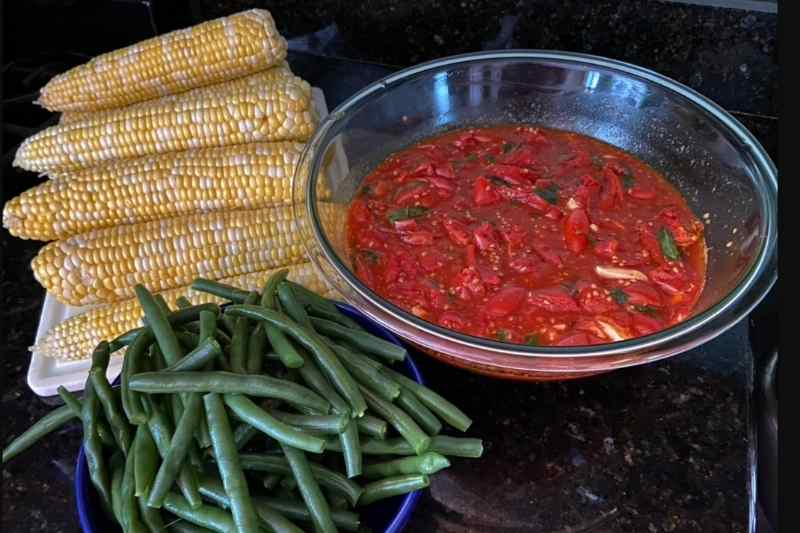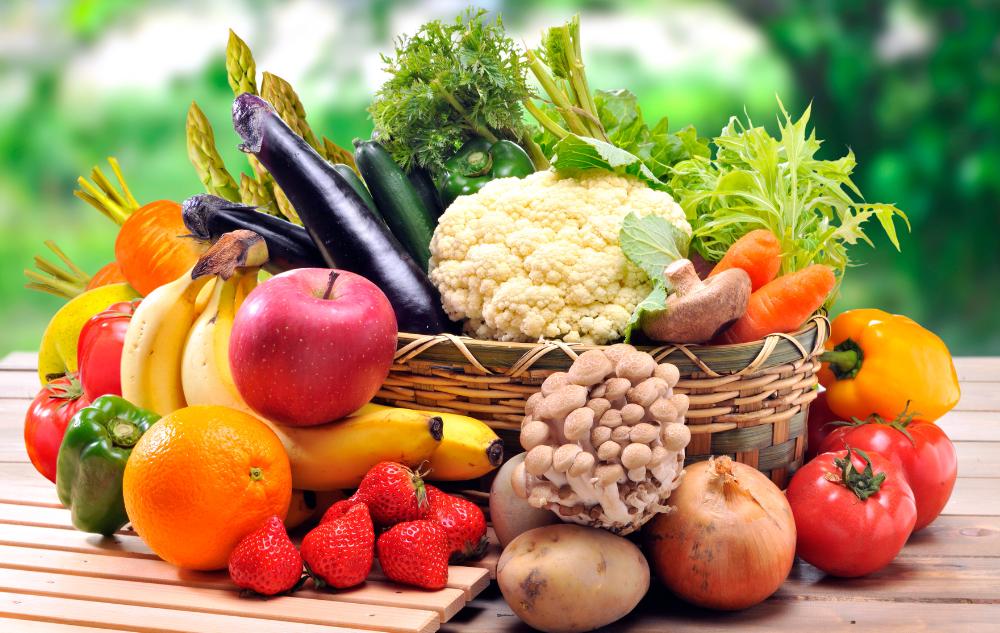You can preserve summer’s bounty with these tips and tricks from One Planet Life.
Is preserving fresh produce hard?
As the growing season quickly fades away, many gardens, CSAs, farmers’ markets, and farm stands are selling the last of their vegetables, fruits, and herbs. It is the time of year to ask, “How can I preserve delicious produce, such as tomatoes, sweet corn, zucchini, and green beans, to enjoy during the winter months?”
Fortunately, techniques such as canning, freezing and dehydrating allow us to enjoy our favorite vegetables, fruits, and herbs all year long. Preserving food need not be complicated and may take only an hour or two out of your day. Not only can you enjoy the rewards of eating fresh-tasting produce year-round, but you can also prevent food waste. Any peelings and scraps from your harvest can be used to make vegetable stock, and any inedible bits can be added to your compost pile. You can reuse your preserving cans, plastic containers, and even plastic bags to further reduce your carbon footprint.
For resources on preserving your favorite vegetables, fruit, and herbs, check in with your library, favorite local bookstore, or Goodwill.
Here are a few recipes that are pretty simple:
Preserving Roasted Tomato, Garlic, and Basil
Ingredients
- 25 ripe medium-sized tomatoes, stemmed and cored. If using more petite tomatoes, use 2 or 3 for every tomato required in the recipe.
- 1-1/2 large heads of garlic, divided into unpeeled cloves
- 1/4 cup extra virgin olive oil
- 1/2 tsp each sea salt and coarsely ground black pepper
- 8 sprigs of basil, chiffonade
Directions
- Heat the oven to 350 degrees Fahrenheit.
- Cut the tomatoes into quarters or in half for petite tomatoes.
- Place the tomatoes, garlic, basil, extra virgin olive oil, salt, and pepper in a large bowl.
- Place the tomato mixture on two large, rimmed baking sheets (can use Silpat or parchment paper to line sheets) and pour any olive oil left in the bowl over them.
- After 20 minutes of baking, you may remove the skins. Skins can be left on for added nutritional value, as they are a great source of antioxidants.
- Roast the tomatoes, garlic, and basil for 15-20 minutes longer, until the mixture is slightly thickened. If it is not, continue to cook further, being sure to watch so that it does not burn.
- Remove the tomatoes from the oven and allow them to cool on the baking sheets.
- Divide and transfer the tomatoes, garlic, and basil into separate containers. You may use a kitchen scale to weigh tomatoes in 8-, 14-, and 28-ounce increments.
- Store the mixture in the refrigerator for up to one week or in the freezer for up to 6 months.
Preserving Whole Kernel Sweet Corn
Bring the freshness of summer to your autumn or winter table! This sweet corn will be a delicious addition to a weekday winter meal or your Thanksgiving dinner table. This recipe for freezing sweet corn is adapted from the Ball Corp. (1989). Freezing. In Blue Book: The guide to home canning and freezing (32nd ed., pp. 86–89). essay.
Ingredients
- Eight ears of sweet corn
Directions
- It is essential to select tender, freshly gathered corn in the milk stage. Husk and trim the ears, remove silks, and wash.
- In an 8.5 quart pot with a lid, fill with water until about half full. Bring water to a rolling boil.
- Add 5 or 6 ears of sweet corn (depending upon size) to the boiling water. Allow the water to return to a boil, and boil the sweet corn for 5-6 minutes. This is known as blanching, which cleanses surface dirt of any organisms, brightens the color, and helps retain flavor, vitamins, and nutrients.
- While the sweet corn is boiling, create an ice bath by filling a large 4-quart bowl with ice cubes and cold water.
- After the sweet corn has been blanched, quickly place one to two corn cobs into the ice bath to stop the cooking process. After 60 seconds, remove the corn from the ice bath and put it in a colander to drain while you repeat the process with the other ears of corn.
- When the corn is cool enough to handle, cut the kernels from the cob.
- Pack corn kernels in reusable plastic freezer bags or containers, ensuring they are adequately sealed. If using freezer bags, be sure to remove all air from the bag before labeling and freezing.
- To use: Cook frozen vegetables as you would with fresh produce, but with a shorter cooking time as they were partially cooked before freezing.
Preserving Fresh Green Beans
Green beans from the garden make an excellent dish cooked alone or in soups and salads. This is an easy way to preserve green beans for the fall and winter months ahead.
Ingredients
- 2 pounds fresh tender green/yellow string beans
Directions
- In a large 6-quart pot, bring 10 cups of water to a boil. Drop the green beans into the water and bring water back to a boil for 3 minutes until tender but still crisp.
- While the green beans are boiling, create an ice bath by filling a large 4-quart bowl with ice cubes and cold water.
- Transfer the beans with a slotted spoon into the ice bath, which stops the cooking process. Stir a couple of times and then drain the green beans.
- On a small baking sheet that will fit in your freezer, lined with a Silpat (which helps to reduce the waste of parchment, waxed paper, or aluminum foil), line green beans into straight-line formations. Freeze.
- Once beans are frozen, remove them from the baking sheet and pack them into reusable plastic freezer bags or containers, ensuring they are adequately sealed. If using freezer bags, be sure to remove all air from the bag before labeling and freezing.
- To use: Cook frozen vegetables as you would with fresh produce, but with a shorter cooking time as they were partially cooked before freezing.












